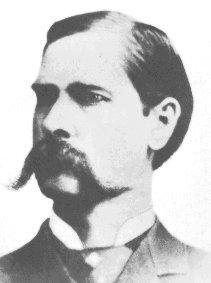An hour before my presentation, the boss runs into my office and informs me that my document doesn’t have nearly enough information to convey the architecture of the system. Mind you, he has had this document in his possession since last Friday. He stepped to the white board and scribbled a picture.
I took over this project from one of the guys that interviewed me for this position, and the minute I took the job, he tendered his resignation. On my first day, he presented his ideas for this architecture that I am now working on. His name was Omar.
“Why don’t you just tweak Omar’s document and bring that to the meeting?”
“My understanding is that this meeting is about requirements,” I explained calmly. “You can’t build a system when you don’t know what the software is supposed to produce.”
“But you aren’t going to hold anyone’s interest with this kind of presentation. You need more pictures of the overall solution.”
Couldn’t you have told me this yesterday? Or the day before? Or the day before that? “Ok, I’ll draw this diagram and append it to the document.”
My drawing software was inadequate, so I downloaded Visio, which is more than enough, but I couldn’t learn it in time. Meeting time came around and I was stuck. My hands were two frozen meat balls as I felt my impending doom.
Ten engineers sat around the table watching me as I sat down with my computer and plugged it into the projector. A black speakerphone lay in the middle of the table where members of the operations team in Buffalo waited to begin.
For those not in the industry, there is a process of software development called RUP, or Rational Unified Process. It begins with all the people who are affected by the development of the product sitting in a room just like this one, reviewing requirements in the form of use cases, which detail every nuance of every service the software provides. This is the time for non-technical people to get involved, to have a say before the engineers take off. Up until now, all interested parties have a say in the final product. Apparently my manager didn’t understand this, but by the end of the meeting he did.
My nerves calmed as I realized what a catalyst the document was for conversation. Ideas were like pennies from heaven, falling everywhere. My pen scribbled as people debated back and forth. After the meeting, engineers came into my office with new ideas, or wanting clarification on points that I brought up.
In all, my structure stood up to the scrutiny, but I’ll have to be wary. I see that what they are paying me to do is a process they don’t understand, or believe in, but I see the light bulbs over heads of some. I know this because of statements like this one, from a senior manager after the meeting: “I have to admit, this is a great way to do this. I had no idea how many ideas were in my head.” My manager just nodded his head with a guarded shade in his eyes. I don’t know what he was thinking, but what he said was, “Thank you Scott for all your hard work.”
My wife says to write emails so that there is an audit trail for everything I do. Watch out for him.
For me this is an application of a process I read in a book to bone up for the interview. I’ve never actually done it. I tried to sell something similar to my previous employer, but he thought it was swatting a fly with a trebuchet. I won’t get anywhere waiting for someone to lead me by the hand. I’ll have to get there myself, and drag this entire company behind me.
I’m proud to say that in this way, I’m not so unlike my father after all.
Subscribe to:
Post Comments (Atom)

10 comments:
I've been pushing RUP-like process at my new job as well. The're starting to come around. Good luck with it!
Jason? As in Jason's Joint!? Well-hell-hell, welcome back to the land of the bloggers. I've missed you buddy. Good to have you back. Please post about the selling experience. I could learn a thing or two from it.
Way to go Scott! Even after reading up on RUPs, I can't help but think blogging and writing in general stimulates some of that creativity. Being awesome can't hurt either.
CYA is always a smart move.
Oh Scott, well done! I have so had a boss like that. But mine always tried to take the glory and blame any gaffs on me. Bless his black little heart.
good luck!
John Elway couldn't have done it better. Good going - and I'm with the CYA group.
Sounds like you took a potentially bad situation and turned it around. Kudos!!! Kathleen and your wife are right, CYA is a must.
Good job! :)
My DH encountered the same thing. And it's happened on more than one occasion. Turns out the IT professionals didn't know what the heck they were doing, but my DH did. :-)
Tanya
I thought this was going to turn into one of those nightmare sequences where you look down to discover you're only dressed in your underwear. Nice thinking on your toes there, Scott. Watch out for that boss of yours.
Bosses with no faith in the staff they employ to do things?
SURELY not!
Glad your actions were vindicated. Your wife is right. He may well try and take credit for your work.
Post a Comment